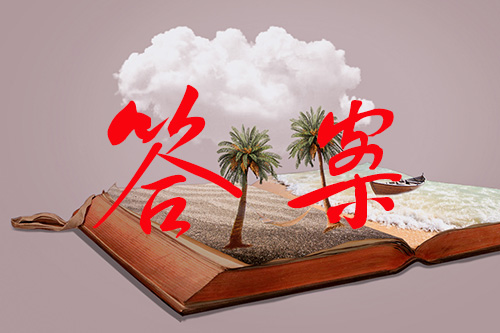
阅读理解
At one time or another in
your life you have probably done origami even if it was just making a paper
airplane or something more complicated like a paper crane. The chances are that
as you did it, you reflected on how inventive this traditional art is. Animals,
boxes, flowers, boats: it all can be created from a single square or
rectangular sheet of paper simply by folding it. No cutting, no pasting.
But did you ever stop to
think how the same techniques might be applied to engineering? Equipment that
could be of real practical use? Origami meets the demand for things that need
to be small when transported and large when they arrive, like the everyday
umbrella. In fact, origami-inspired creations have already flown in space; in
1995, Japanese engineers launched a satellite with solar panels that folded
like a map.
"It's now
mathematically proven that you can pretty much fold anything," says
physicist Robert J. Lang, who quit his engineering job eight years ago to fold
things full time. Lang, an origami enthusiast since age six, advised a advised
well-known ear manufacturer the best way to fold an airbag into a dashboard. He
is currently working on a space telescope lens that, if all goes according to
plan, should be able to unfold to the size of a football field.
At one time or another in
your life you have probably done origami even if it was just making a paper
airplane or something more complicated like a paper crane. The chances are that
as you did it, you reflected on how inventive this traditional art is. Animals,
boxes, flowers, boats: it all can be created from a single square or
rectangular sheet of paper simply by folding it. No cutting, no pasting.
But did you ever stop to
think how the same techniques might be applied to engineering? Equipment that
could be of real practical use? Origami meets the demand for things that need
to be small when transported and large when they arrive, like the everyday
umbrella. In fact, origami-inspired creations have already flown in space; in
1995, Japanese engineers launched a satellite with solar panels that folded
like a map.
"It's now
mathematically proven that you can pretty much fold anything," says
physicist Robert J. Lang, who quit his engineering job eight years ago to fold
things full time. Lang, an origami enthusiast since age six, advised a advised
well-known ear manufacturer the best way to fold an airbag into a dashboard. He
is currently working on a space telescope lens that, if all goes according to
plan, should be able to unfold to the size of a football field.
郑重声明:本文版权归原作者所有,转载文章仅为传播更多信息之目的,如作者信息标记有误,请第一时间联系我们修改或删除,多谢。
